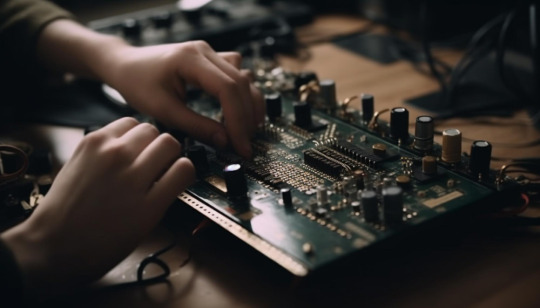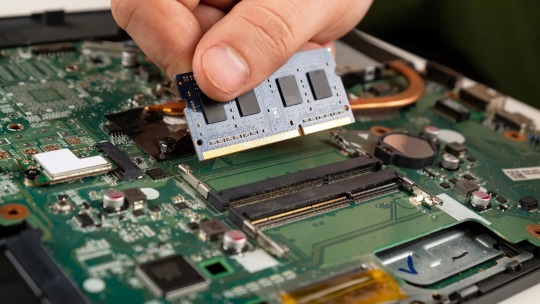Don't wanna be here? Send us removal request.
Text
Redefining Laptop Motherboards: A Journey from Past to Future
The laptop motherboard, often referred to as the mainboard, is the critical circuit board in a laptop that integrates the core components and peripherals. This article explores the evolution of laptop motherboards, highlighting key trends and speculating on future prospects.

Foundations of Laptop Motherboards
In the initial stages, laptop motherboards were bulky and inflexible, primarily designed for basic computing tasks. These boards used single-core processors and had limited expansion capabilities. The focus was on functionality over form, often leading to heavier and thicker laptops. As technology advanced, so did motherboard design, paving the way for multi-core processors and integrated circuits.
Toward Smaller and Smarter Systems
A significant trend in the evolution of motherboards is the drive towards integration and miniaturization. Modern motherboards are marvels of integration, incorporating CPUs, GPUs, RAM, and other essential components into increasingly compact spaces. This trend is partly driven by the demand for thinner, lighter, and more energy-efficient laptops. As a result, we've seen a significant reduction in the size and weight of laptops, making them more portable and convenient.

Enhanced Efficiency and Power
Another critical trend is the continuous improvement in power efficiency and performance. Modern motherboards support advanced power management technologies that optimize battery life without compromising performance. This efficiency is crucial in today's mobile-first world, where users expect long battery life alongside robust performance. The incorporation of solid-state drives (SSDs) and faster RAM technologies directly onto the motherboard has also dramatically improved data access speeds and overall system responsiveness.
Connectivity Revolution
The evolution of connectivity options on laptop motherboards has been remarkable. From the early days of limited USB ports and no wireless connectivity, we now have motherboards with multiple USB-C and Thunderbolt ports, offering high-speed data transfer and charging capabilities. Wireless technologies like Wi-Fi 6 and Bluetooth 5.0 are now standard, providing faster and more reliable wireless connections. This evolution has greatly enhanced the usability and versatility of laptops.

Looking Ahead: Modular Systems and Sustainability
Looking to the future, one potential trend is the move towards modular laptop designs. This concept involves user-replaceable components, allowing for easier upgrades and repairs. While this idea challenges the current trend of integration, it holds promise for sustainability and longevity of devices. Additionally, with the advent of technologies like 5G and AI, future motherboards may incorporate specialized chips to handle these advanced capabilities, enhancing connectivity and computational power.
Emerging Technologies and Future Challenges
Despite these advancements, there are challenges. The high level of integration makes repairs and upgrades difficult, often leading to shorter device lifespans. There is also a growing concern about electronic waste and the environmental impact of rapidly evolving technology. Addressing these issues will be crucial for sustainable development in this field. Check out here to know more.

The Role of Emerging Technologies
Emerging technologies like graphene and quantum computing hold the potential to revolutionize motherboard design further. Graphene, with its superior electrical and thermal properties, could lead to even more efficient and smaller motherboards. Quantum computing, though still in its infancy, could drastically change the processing capabilities of laptops, offering unprecedented computational power.
Wrapping Up: The Continuous Evolution
The evolution of laptop motherboards is a testament to the rapid advancements in technology and engineering. From bulky and basic circuits to highly integrated, efficient, and powerful systems, motherboards have come a long way. As we look towards the future, the focus will likely be on sustainability, modularity, and incorporating emerging technologies, ensuring that laptop motherboards continue to evolve in exciting and innovative ways.
1 note
·
View note